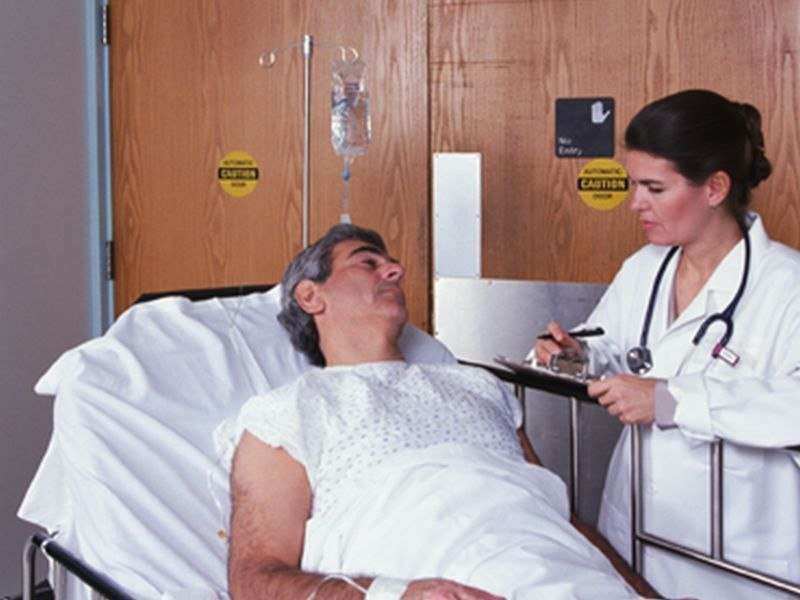Pharmacist participation in stroke response cuts door-to-needle time

(HealthDay)—Having a pharmacist at bedside during acute ischemic stroke is associated with significantly shorter door-to-needle (DTN) times, according to a study published recently in the Annals of Pharmacotherapy.
Megan A. Rech, Pharm.D., from the Loyola Medical Center in Maywood, Ill., and colleagues conducted a retrospective cohort study to examine whether pharmacist presence at bedside during acute ischemic stroke correlated with a reduction in DTN times. Data were included for 125 patients who received recombinant tissue plasminogen activator; 45 and 80 patients had and did not have a pharmacist present (PharmD and no-PharmD groups, respectively).
The researchers found that the median DTN time was significantly shorter in the PharmD group versus the no-PharmD group (48 versus 73 minutes; P < 0.01). Overall, 71 and 29 percent of patients in the PharmD and no-PharmD groups met the goal of DTN ≤60 minutes (P < 0.01). The only factor independently associated with reduction in DTN time was pharmacist at the bedside (β coefficient, −23.5 minutes).
"These findings support the inclusion of a stroke-competent pharmacist in the bedside response team for acute ischemic stroke patients," the authors write.
More information: Abstract/Full Text (subscription or payment may be required)
Copyright © 2018 HealthDay. All rights reserved.





















